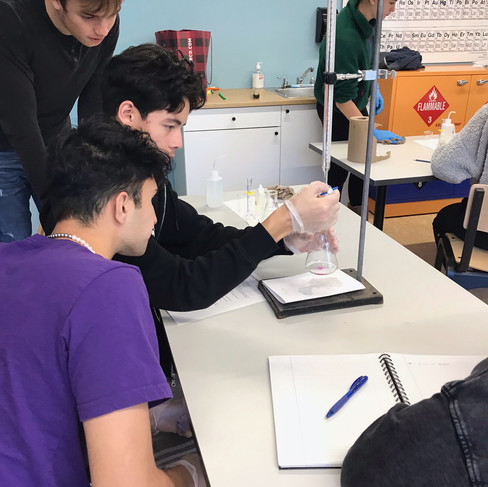Grade 11s Dive into Solutions and Concentrations
- Halton Waldorf School

- Dec 15, 2023
- 1 min read
By Nashwa Amry and Eszter Pigott, High School Teachers
The grade 11 science curriculum is structured to provide students with a deeper understanding of scientific principles, chemical reactions, and the properties of substances.
Studying solutions and concentrations allows students to explore fundamental concepts in chemistry. It provides insights into how substances interact, dissolve, and form solutions, and it introduces them to the quantitative aspect of chemistry through understanding concentrations.
In a recent Chemistry class, grade 11 students applied wet chemical analysis technique through volumetric titration to predict the unknown concentration of a diluted acid. This is an important scientific technique, a cornerstone of the solutions and concentrations unit. To master this objective, students need to carefully observe, collect data, perform calculations and analyse their results.
Students learned the cleaning and rinsing technique of all equipment before and after this kind of analysis/experiment, the importance of the indicator solution, the difference between equivalent and endpoint and how that background knowledge is important. They had a better appreciation for titration experimental factors, sources of error and calculating the percent deviation to evaluate the accuracy of their results.
By allowing students to engage with the material in a practical and meaningful way the curriculum aims to foster a holistic and comprehensive education that considers both the intellectual and experiential aspects of learning. By studying solutions and concentrations, students not only develop their understanding of chemistry but also enhance their critical thinking skills and ability to apply scientific principles in real-world contexts.










Comments